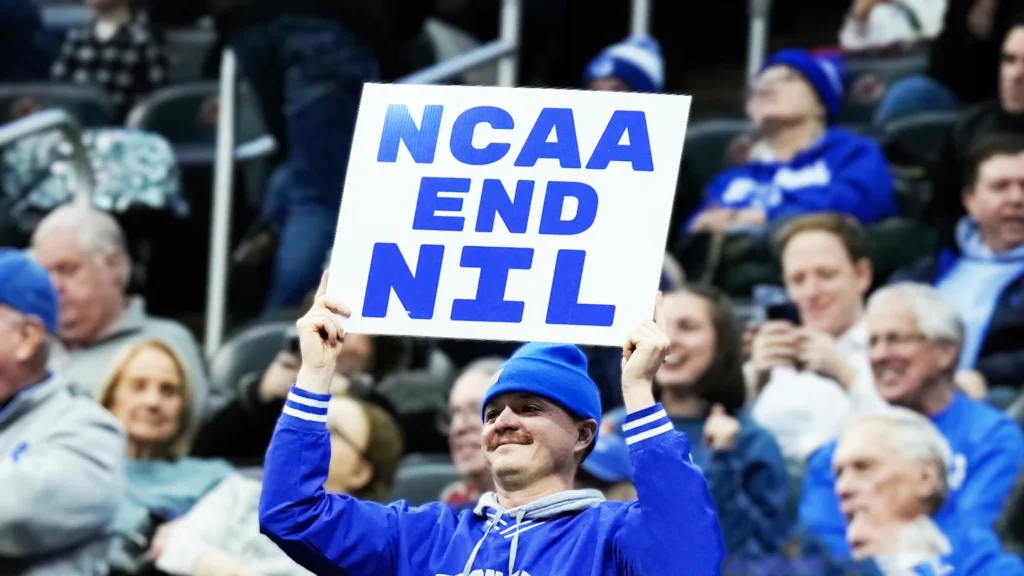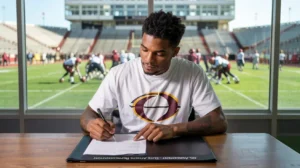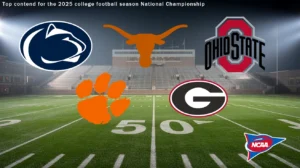
The Whistle Has Blown: College Sports Enters Uncharted Territory with NCAA NIL Settlement
For decades, the bedrock principle of amateurism has governed the National Collegiate Athletic Association (NCAA). Student-athletes, celebrated for their prowess on the field and court, were famously barred from directly profiting from their Name, Image, and Likeness (NIL). That era, long debated and increasingly challenged, has now officially ended. A landmark federal antitrust settlement, largely stemming from the House v. NCAA lawsuit, has kicked off a brand-new ballgame, irrevocably transforming the landscape of college athletics.
As of June 6, 2025, U.S. District Judge Claudia Wilken’s final approval of the NCAA NIL settlement has opened the floodgates for direct payments to Division I student-athletes. This isn’t just a tweak to the rulebook; it’s a complete rewrite, fundamentally altering the financial dynamics and operational structures of collegiate sports.
Direct Payments: A Game-Changer for Student-Athletes
The most significant takeaway from this historic agreement is the ability for opt-in Division I schools to directly compensate student-athletes for their NIL. Starting July 1, 2025, a new revenue-sharing model will come into play, allowing institutions to disburse up to an estimated $20.5 million annually per school in direct payments. This cap, projected to increase annually over the 10-year settlement period, directly links student-athlete compensation to the massive media deal revenues their performances generate. The days of booster-funded collectives operating in a legal grey area are largely over; the paychecks will now flow directly from university athletic departments.
This move is a monumental win for athletes who have long argued for a share of the billions generated by college sports. For a star quarterback or a standout basketball player, this could mean substantial annual earnings on top of their scholarships and existing third-party NIL deals.
Beyond the Paycheck: Scholarship Limits Removed, Roster Limits Introduced
The ripple effects of this settlement extend far beyond direct payments. In a move poised to dramatically increase access to higher education through sports, the NCAA has eliminated sport-specific scholarship limits for Division I schools that choose to opt into the agreement. This means schools can now offer as many scholarships as they deem fit, albeit within newly established roster limits for each sport. For instance, a football team previously limited to 85 scholarships can now offer full rides to all 105 players on its roster. This shift is particularly impactful for women’s sports, with projections indicating a substantial increase in available female athletic scholarships.
While the removal of scholarship caps is a boon, the introduction of roster limits presents new challenges for athletic departments. However, crucial “grandfathering” provisions are in place to ensure current athletes with remaining eligibility won’t lose their spots as teams adjust to the new size constraints.
Back Pay and Lingering Questions: The Road Ahead
The settlement also addresses past grievances, establishing a nearly $2.8 billion fund to compensate former student-athletes who competed between 2016 and 2024 and were denied NIL opportunities. While a necessary step towards justice, this aspect of the settlement has already faced a significant challenge. Eight female athletes have filed an appeal, arguing that the proposed distribution model – with a disproportionate share allocated to men’s football and basketball – violates Title IX. This appeal could delay the disbursement of back payments, though it’s not expected to halt the forward-looking provisions of the settlement.
Furthermore, a new regulatory landscape for NIL deals is emerging. A dedicated online platform, NIL Go, overseen by LBi Software and Deloitte, will now serve as a clearinghouse for all NIL transactions exceeding $600. This platform will scrutinize deals for “valid business purpose” and “reasonable compensation,” with disputes resolved through neutral arbitration. This aims to bring much-needed clarity and oversight to a previously Wild West environment.
The Future of College Athletics: A Landscape Transformed
The NCAA NIL settlement is more than just a legal agreement; it’s a societal acknowledgment of the economic value and contributions of student-athletes. It signifies a profound departure from the long-held amateur ideal and embraces a more professionalized model for collegiate sports.
While the immediate impact will be felt in player compensation and recruiting dynamics, the long-term ramifications are still unfolding. Will direct payments create further disparities between powerhouse programs and smaller institutions? How will this impact team cohesion and locker room dynamics? And what role will federal NIL legislation play in solidifying these changes and potentially granting antitrust immunity to the NCAA?
One thing is certain: the era of the “student-athlete” as we once knew it is over. Welcome to the new era of compensated collegiate athletes, where talent, brand, and market value will increasingly dictate the terms of engagement. The roar of the crowd will now be accompanied by the rustle of direct deposits, echoing a seismic shift in American sports.

